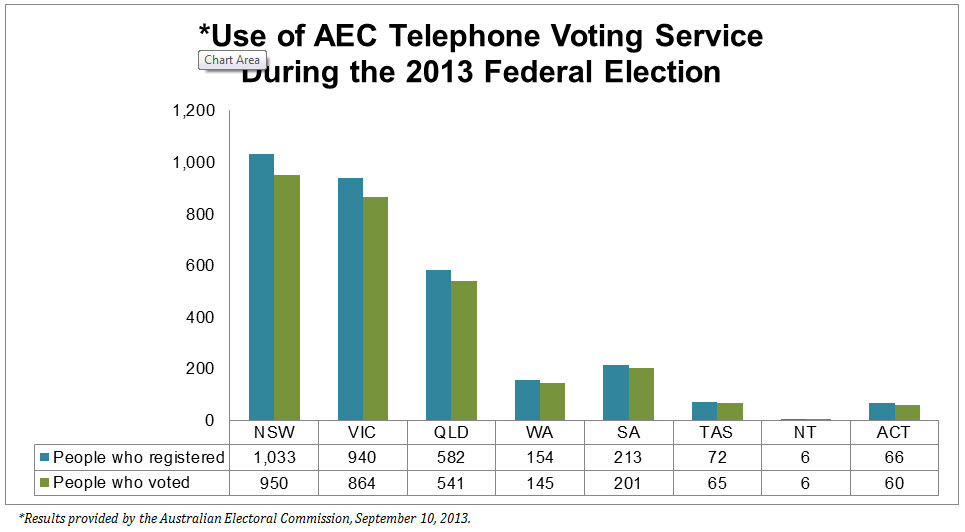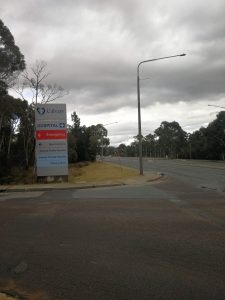Blind and Low Vision Australians Afforded an Independent Vote in Federal Election
BLIND and low vision Australians, for the first time in an Australian Federal Election, were allowed the option to cast their vote anonymously and independently, using a telephone voting system, developed by the Australian Electoral Commission (AEC).
The telephone-based voting system, which enables vision-impaired Australians to cast votes from any location, was available in all eight States and Territories during the September 2013 Federal Election. According to the AEC, the new method of voting was well received with 2,832 out of 3,066 Australians registered with the service, casting their vote over the phone.
Prior to the new voting system, blind and low vision voters participating in federal elections have cast their votes through standard voting methods, such as by postal vote or attending a polling station. But, for many people living with vision impairments, assistance from a secondary party is often required, revoking the individual’s right to cast an independent and anonymous vote.
In order to use the new telephone voting system, voters must first have registered with the AEC over the phone. Upon registration, the blind or low vision voter received a pin number, which was later used by an AEC voting official to anonymously mark the voter’s name off the electoral roll. Once registered, the voter could then call the Australian Electoral Commission a second time, in his or her own time, from any location, to cast an official ballot with an official representative.
According to internal data from Vision Australia, in 2011 over 22,000 Australians over the legal voting age were classified as blind or having low vision. Tara Nichols, spokesperson for the Australian Electoral Commission, said although the number of people registered to use the telephone voting service this year was comparatively low, the AEC are happy with the participation numbers, viewing the new system as an additional method to existing voting options, instead of a complete replacement. “It is a small number,” she said, “but in terms of the number of votes taken, it’s considered quite a lot… If [a vision impaired person] cannot make it to a polling place [they] don’t have to vote. So, a lot of people may chose not to vote on election day if they are blind and have trouble getting to the polling place, or if they need to ask family or a friend for assistance and they don’t feel confortable doing that”
Ms Nichols said those who voted this year by telephone might not have otherwise voted, due to accessibility barriers existent in traditional voting methods. Potentially capturing those votes, she said, was important to the AEC.
In the lead-up to the 2013 federal election, the Australian Electoral Commission formed a Blind and Low Vision Reference Group, comprising of representatives from various disability bodies around the country. Lobby groups such as Vision Australia worked closely within the reference group to assist in the development of the telephone voting method.
Acting Public Affairs Manager for Vision Australia, Mr Brandon Ah Tong, said lobbying from the blindness sector for improved and more inclusive voting systems has always been strong, particularly in the last few decades, as appropriate technology has become more readily available.
“The push for better voting methods for the vision impaired has been strong in the blindness sector,” he said. “Coming into the 21st century there are really no excuses why [vision impaired] people can’t do the same things, in different ways, using technology. We think the time has come to use technology that is available…to vote for our own leaders“
Mr Ah Thong said there are many reasons why organisations like Vision Australia have been pushing for a more inclusive voting system; lack of anonymity and independence for blind and low vision Australians being two of the biggest issues; “It’s not just about anonymity, it’s about being able to do things in secret, so nobody else knows what it is you are doing,” he said “But also, the independence factor. Someone should be able to cast their vote, in their own time, with their own thoughts, by themselves. When you think about it, those two things put together are fundamentally what democratic voting systems are about. One person, one vote…That’s fundamental to democracy.”
Mr Ah Thong said the new method is a plus for all blind and low vision Australians in regards to convenience, but is especially significant for those who have limited access to social support networks and those living in remote and rural locations, “For a lot of people who have been [voting] for years, it’s sort of standard practice that they go down to the polls with their spouse or son or daughter or whoever. But for others it’s about trying to organise somebody to come down when the other person is available, when they are ready or going to the polling station. The polling officials are very happy to help out, there is a requirement to help you out,” he said “but at the end of the day you should be able to do it independently, you should be able to do it in secret.”
The Australian Electoral Commission told NowUC they will be evaluating the telephone voting system sometime after the election, with potential for the system to change, depending on final outcomes.
By EMMA BOURKE





Be the first to comment!